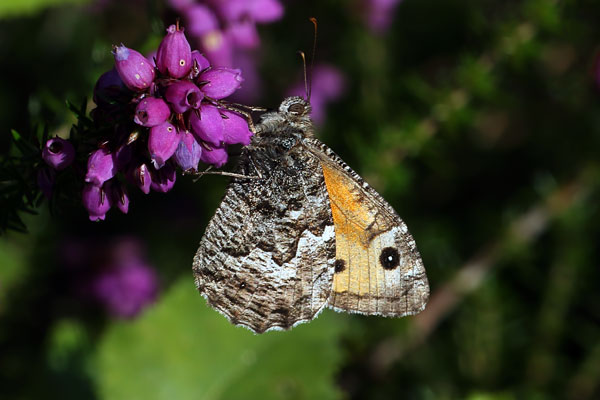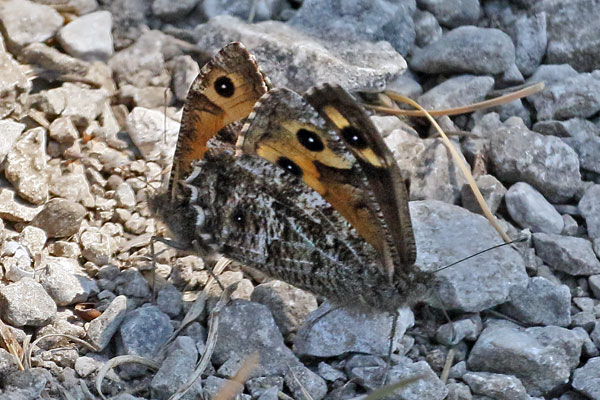Grayling (Hipparchia semele) | Species | ||||||||||||||||||||||||||||||||||||||||||||||||||||||||||||||||||||||||||||||||||||||||||||||||||||||||||||||||||||||||||||||||
 Taken at Holden's Firs, Berks, on August 8th 2021. (1/400th sec at f11. © David Hastings)  Mating pair. Taken at Arnside Knott, Cumbria, on June 23rd 2022. (1/1000th sec at f11. © David Hastings) DescriptionFamily: Satyrinae Wing span: 51 - 62 mm The Grayling is a master of disguise. Although it is fairly conspicuous when in flight, it can mysteriously disappear as soon as it lands, being perfectly camouflaged against a background of bare earth and stones. There are six named subspecies in the British Isles. They are semele, which occurs throughout the range of this species, except for Scotland and Ireland; thyone is confined to the western side of the Great Orme; scota is found around the coast of Scotland, with the exception of the western isles; atlantica is found in north-west Scotland; hibernica is found throughout Ireland, with the exception of the Burren; clarensis is found in the Burren in Ireland. This butterfly forms discrete colonies throughout the British Isles. It is primarily a coastal species, although colonies do occur inland. Colonies vary considerably in size, the smallest containing a couple of dozen and the largest several thousand individuals. Its preferred habitat is sheltered, sunny and dry sites where vegetation is sparse. Typical sites include heathland, sand dunes, coastal grassland and disused quarries. Adults generally begin to emerge at the start of July, peaking at the end of the month. The colonies found on the Great Orme in north Wales, where individuals are much smaller in size than other colonies and are a distinct subspecies, emerge much earlier than at other sites, often at the beginning of June. There is one generation per year. The larva is the overwintering stage. The primary larval foodplants are Bristle Bent, Early Hair-grass, Red Fescue and Sheep's-fescue. Adults feed primarily on Bird's-foot Trefoil, Bramble, Heather, Marjoram, Red Clover, Teasel and Thistles. The Grayling always rests with its wings closed, angling its body to the sun like the Small Heath. When disturbed, the butterfly will raise its fore-wings for a second or so, revealing a dark eye spot that is designed to confuse predators. Vulnerable Sightings
| |||||||||||||||||||||||||||||||||||||||||||||||||||||||||||||||||||||||||||||||||||||||||||||||||||||||||||||||||||||||||||||||||
